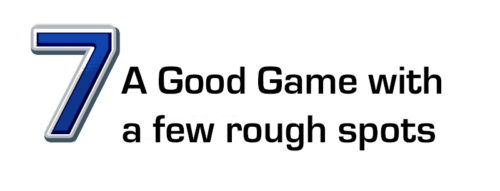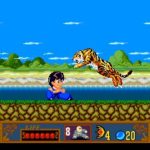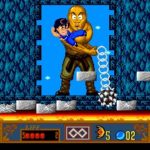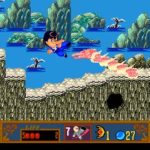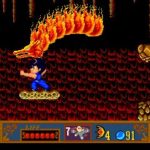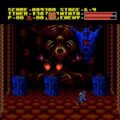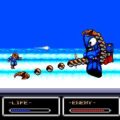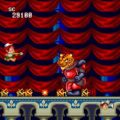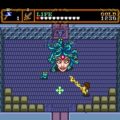Developer: Hudson Soft Publisher: Hudson Soft Released: 1992 Genre: Action
Jackie Chan’s Action Kung-Fu is the type of hidden gem that I enjoy writing about. I didn’t think much of it when it released and wrote it off as a goofier version of Kung-Fu. But one yard sale later and I was proven wrong. To this day it remains a hidden gem in the NES library. Apparently Hudson thought so as well as they remade the game for the Turbo Grafx-16 the following year. Jackie Chan’s Action Kung-Fu was a welcome addition to the system; in the US the library had far too many shooters and a piss poor selection of side scrolling action games. It isn’t as good as the original but is still a great game nonetheless.
The most distinctive aspect of this version of Jackie Chan is its graphics. The NES game was heavily stylized and distinct. That helped it stand out and made it one of the better looking games for the system. This version uses a slightly more realistic style that is both beautiful and but less unique. The sprites are larger and more expressive, especially Jackie himself. The animation is significantly better with more frames that make Jackie’s numerous special moves pop. Most enemies sport many facial expressions as well. But the change in art style makes them lose their character, for lack of a better word. The game wants to go for a semi-realistic look but still has the palette of its chibi Nintendo counterpart. It clashes despite the many improvements.
Where the character sprites might be divisive the backgrounds are not. The game has an almost water color looks to its backgrounds. There was a layer of abstraction to the NES game that made up for its lack of hardware grunt. That limitation is no more and the art direction truly shines. The many Chinese fields, temples and mountainsides look fantastic and feature a layer of parallax scrolling to boot. These instances make the flat backdrops stand out but as a whole this aspect of the game looks great.
From a gameplay standpoint Jackie Chan is mostly the same. You have a basic set of melee attacks like kicks and punches for offense. If you hold the button Jackie will perform a hadoken, although these are limited to just five. Although it is strong enemies will not drop orbs. The most unique are the various special moves that of all things, come from frogs. There are five different special attacks that are powerful and add variety to your arsenal. Though limited the frog appears often enough that you can switch and play around with them. Lastly orbs will refill your health and hadoken meter, although the amount is different now and not for the better.
Next to its visual face lift the level design has been overhauled. The game is still five levels long but now each stage is significantly longer. That isn’t a bad thing in itself but the way it does so is bad. Rather than creating all new sections the game instead repeats entire areas wholesale. It becomes blatant when you fight the same tiger in the same area four times in a row. It reaches its nadir in the last level when you fight the same dragon statue five times with slightly different attacks. The pacing of the NES title was near perfect and this version destroys that. If they were so adamant on making the game longer they would have been better off creating new stages. They created new bosses, that is half the work and this title would have been better for it.
This is a much more difficult game than its NES sibling. The levels feature more enemies and with their longer length make the time between health power-ups more perilous. An unwelcome change that compounds this is the orbs. In the Nintendo version fifty orbs would restore your health. Now you need one hundred, a total that can take two or three levels to reach. The balance between rice bowls and orbs is what made the original so fun. Now it becomes imperative to find the bonus stages to make up the difference. It is not as bad as I make it sound but it does bring the game down a notch. The game keeps the same single life, multiple credit setup but at least there are multiple checkpoints per stage. You will have to work harder to reach the end, which is all.
In Closing
Hudson did a solid job bringing Jackie Chan’s Action Kung-Fu to the Turbo Grafx-16 and while it has its flaws it is still a pretty good game. Outside of imports this is one of the better action games for the system.
